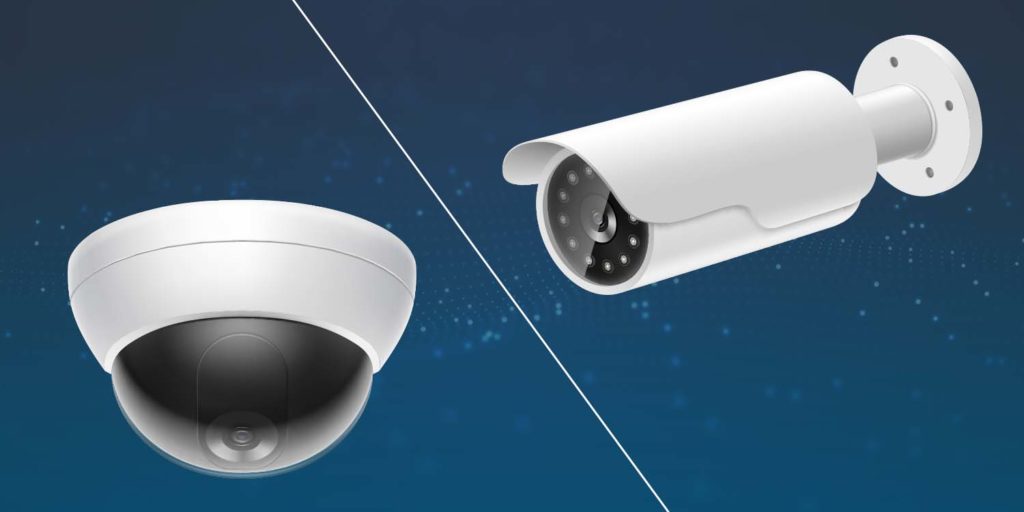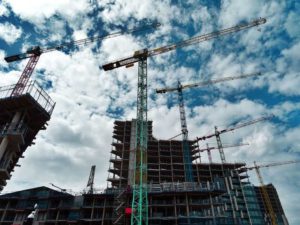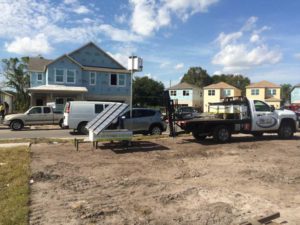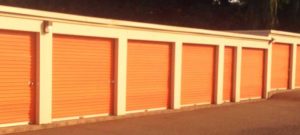Things like shape and design, as well as extra features, affect the business security camera you buy. For example, the shape of the security camera impacts the view angle significantly. This blog will compare the two primary types of video surveillance camera designs: the dome and the bullet. When comparing the dome vs. the bullet camera, which is better for your business?
Benefits of Dome Surveillance Cameras
A dome security camera is enclosed in a hemispherical housing. This housing is usually very tough and made to withstand both indoor and outdoor conditions. Many of the dome camera models on the market today include benefits like:
-
Discretion
These cameras have a lower profile than bullet cameras. If you look hard, you can spot these eyes in the sky, but it’s easy to pass right by them unnoticed. This stealth makes them ideal for places where people may not expect to be surveilled.
-
Tamper-Proof Angles
They also hide which direction the lens is pointing, which makes them valuable as a deterrent. Even if a thief can reach the dome camera, they can’t change the direction of the lens.
-
The Perfect View
The dome design can enclose a wide-angle view camera lens. Usually, dome cameras are equipped with a variable focal field of view, making them suitable for monitoring larger areas with fewer camera units. Your security team can make the adjustments necessary to cover the exact field of view you need.
-
Installation
A dome camera can be easily put into a ceiling or on an eave. That’s not all; these cameras are quite versatile and can fit several settings. Some are even equipped with discreet pan and tilt functionality, allowing the camera to be adjusted or moved without drawing attention. This feature is extremely useful for businesses such as casinos since it can be used to track suspicious activity without letting the intruder know they are under surveillance. However, once installed, it is usually not mobile. If you need to change the field of view for some reason, you should consult a professional.
-
Durability
These cameras are typically made of tough materials, making them quite durable. They tools last a long time, in part, because the camera’s delicate sensors are encased in a protective shield. You can even purchase a dome camera as “vandal-proof.” This means the camera’s impact protection rating is high.
-
Aesthetics
Dome cameras are less obtrusive and more aesthetically pleasing, making them excellent for interior spaces or places where a camera should be less noticeable, such as retail establishments, hotels, or office environments.
-
Privacy Masking
Many dome cameras have privacy masking features that allow particular sections of the camera's field of view to be hidden or blacked out. This is crucial in situations when some places, such as restrooms or employee-only areas, must not be recorded.
Benefits of Bullet Surveillance Cameras
Bullet cameras have a housing that is oblong, or shaped like a bullet. As a result, these cameras are more conspicuous compared to the other type and will typically stand out from a static wall or corner eave. If you want people to know they’re being watched, a bullet surveillance camera is the obvious choice.
Some of the bullet camera models on the market today include these features and benefits:
-
Portable
They can more easily be moved, so you can change the angle of the lens to cover specific areas of interest.
-
Outdoor-Proof
The housing can be weatherproofed to withstand even the most intense environmental conditions (including rain, dust, and extreme temperatures).
-
Eagle Eye
They offer good HD long-distance vision. This can help spot people at great distances or even read a license plate, thanks to zoom camera features. As such, these cameras are commonly used in outdoor applications such as parking lots, perimeters, or entrance gates.
-
Customized Installation
Unlike dome cameras, which are typically mounted to the ceiling, these cameras are extremely versatile and can be mounted to walls, ceilings, and poles. They can also be wired, wireless, or use solar panels for power.
What are the differences between a dome and a bullet camera and what should you choose for your business?
What is the Difference between a Dome and a Bullet Camera?
The obvious difference between a dome and a bullet camera is in their design, but the differences go far beyond looks.
| Features | Dome Cameras | Bullet Cameras |
| Typically static, hardwired into a wall or ceiling, but they don’t have to be; they can be wireless. Most of the time, however, once they’re mounted, they stay in place. | ✓ | |
| Often wireless, this frees you up to place them in very remote or rural settings. | ✓ | |
| Can easily change direction. Some even allow your security team to move the camera angle remotely. | ✓ | |
| Camera housings are often more vandal resistant, depending on where they are mounted. | ✓ | |
| Should be mounted high up to make them less accessible to vandals. | ✓ | |
| Can work outdoors. | ✓ | |
| Typically have a longer field of vision. | ✓ |
The features that these cameras offer are quite similar. The differences relate more to the shape and installation of the camera. For example, both bullet and dome cameras offer features like infrared LEDs for low-light conditions. Both types of cameras can connect to the internet. This allows your video surveillance company to monitor site activity in real-time.
Bullet Camera vs. Dome Camera: How Much Does It Cost to Install One?
Cost considerations plays an important role when choosing between dome and bullet cameras for a surveillance system. Let’s take a closer look into the costs associated in installing both types of cameras to help you make a decision that aligns with your budget and security requirements.
Initial Purchase Costs
Dome cameras are can be cost-effective compared to bullet cameras with similar features and specifications, making them an attractive option for businesses on a budget. Basically, the cost differences vary significantly depending on the brand, model, and features (e.g., resolution, low-light capabilities, zoom capabilities, smart features such as motion detection and facial recognition, etc.). As expected, cameras with more advanced features come with a higher price tag.
Installation Costs
-
Mounting and wiring. Dome cameras are typically easier to install on ceilings and walls, resulting in lower installation costs. Bullet cameras, on the other hand, may require more complex mounting solutions, especially when aiming them at specific angles. The cost of wiring can also vary. Bullet cameras often require more extensive cabling due to their different mounting options, resulting in higher labor and material costs.
-
Professional Installation vs. DIY. Do you want to hire a professional to install the units or would you rather go for the DIY approach? Professional installation ensures proper setup but you have to pay for the associated labor fees. With DIY installation, you can save on professional fees but it requires more time and effort.
Generally, DIY installation should only be considered for businesses with straightforward surveillance requirements, such as monitoring a small office or a single entrance, and if you or your staff have some level of technical expertise in working with networking, power, and cabling. Otherwise, better leave it to the pros.
* There are several reasons why you should let the experts handle the job.
* They have ample experience and can handle the unique and often complex surveillance requirements of your business establishment.
* They can determine the best locations and angles for cameras to achieve the desired coverage.
* Professional installers can customize your surveillance system and ensure seamless integration with other security measures, such as access control systems, alarms, or advanced analytics.
* They can accurately align your surveillance system with industry-specific regulations and/or privacy laws.
* They offer warranties and ongoing support.
Long-Term Costs
-
Maintenance. Both dome and bullet cameras require regular maintenance (cleaning the lenses, checking for firmware updates, addressing technical issues, etc.) to ensure their functionality; costs can vary based on camera brand and model.
-
Software and licensing. Some surveillance systems may require software licenses for features like advanced analytics or remote access.
-
Upgrades and expansion. Expanding your surveillance system or upgrading to more advanced cameras in the future can require purchasing new cameras, integrating them into the existing system, and potentially replacing older units.
-
Cloud-based vs. local storage. Using cloud-based storage solutions for video footage may be more convenient but it comes with ongoing subscription fees which may be determined by the amount of data storage required and the chosen cloud provider. On the other hand, local storage options (NVRs, hard drives, etc.) have a higher upfront cost but frees you from recurring cloud storage fees.
Dome vs. Bullet Camera: Which is Better for Your Business?
If you’re considering a dome camera vs. a bullet camera for your business, what you choose depends on what you need. Ask yourself:
-
What are the types of areas I’m trying to cover?
Generally, dome cameras are more commonly used indoors due to their discreet design while bullet cameras are more suitable for outdoor applications due to their weather-resistant construction. For example, dome cameras may be more suitable in a hotel lobby, boutique clothing store, or restaurant where preserving the right ambiance is crucial, whereas bullet cameras may be the right choice for outdoor applications, industrial settings and high-crime areas.
Keep in mind you can combine dome and bullet cameras. You can also individualize key features on each unit depending on where they’re placed. -
What kind of visibility does each camera need?
Do I need night or thermal vision? Do I need to cover a wide angle? Should I be able to pan and tilt the camera or widen the view from my smartphone? What image resolution is best?
-
What are the types of environmental hazards the camera will endure, like weather or heat?
Do they need to be tamperproof?
-
What kind of installation will I need—and what can I support?
-
Could solar panels prolong my battery life?
Should I hardwire the units? Do they need to be mobile?
-
Who is the audience I’m surveilling?
Workers? Customers? Trespassers at night? Can the camera work as a deterrent if it’s visible? Would adding audio and visual elements to the camera scare away potential thieves and vandals?
Obviously, you should be asking these and other questions when considering a dome vs. a bullet camera for your business. Before trying to figure this out we have a better question to ask: Is this something you should leave to chance? Pro-Vigil not only has the right questions you should be asking but we also have the answers. There’s no need for you to struggle with deciding between a dome camera vs. a bullet camera. Contact us for a free consultation today. We’re here to help protect what matters.









